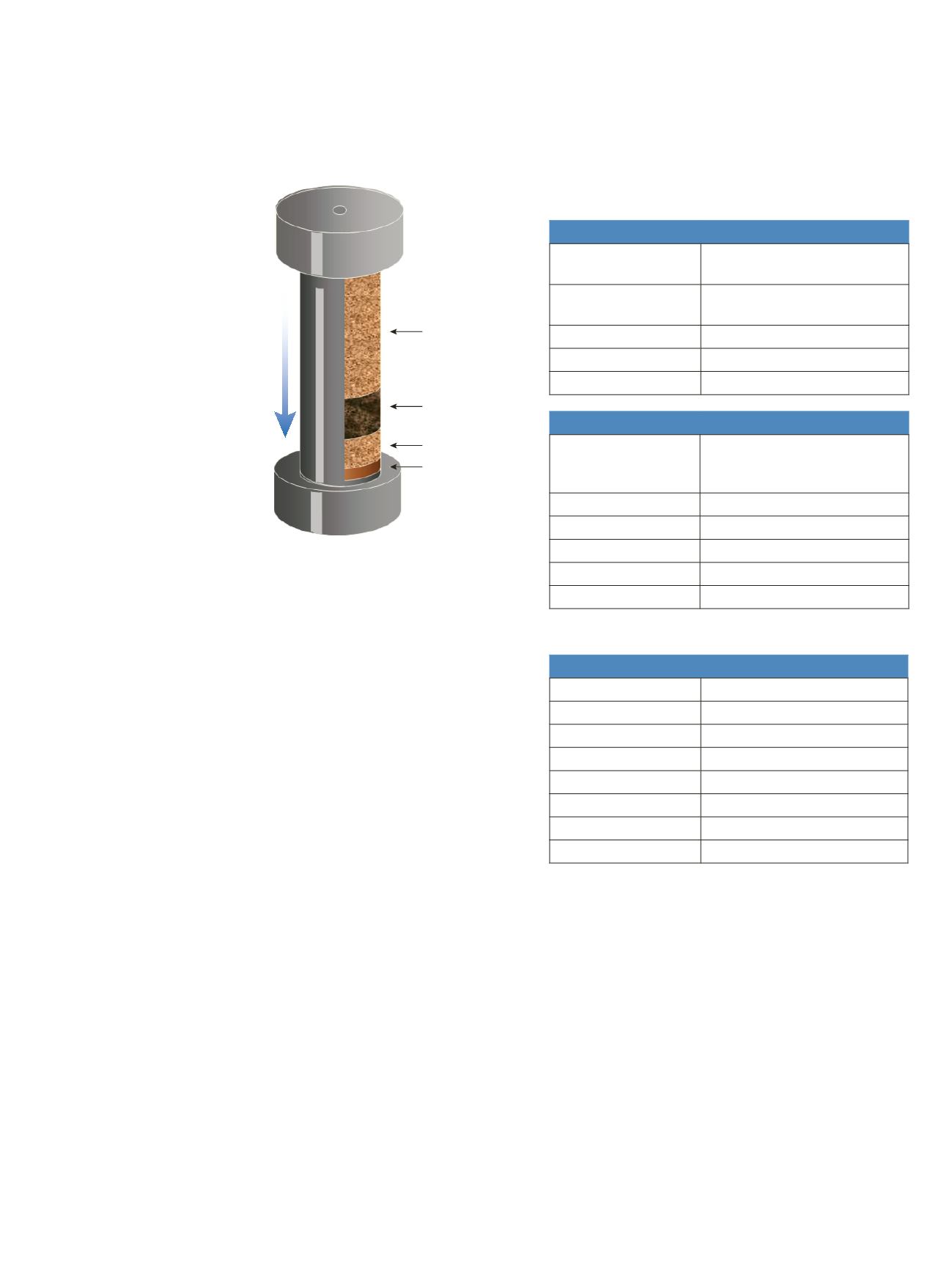

2
Accelerated Solvent Extraction Methods
ASE cells were loaded with a base layer of copper filings
then a layer of rinsed Ottawa sand (previously ashed at
450 °C) after which 5 g of sample for soils/sediments
(1 g for fly ash). Finally, another layer of sand was added
to fill the cell and then extracted (Figure 1).
Figure 1. Cell schematic and method conditions for the extraction of PCDD/Fs
from soil, sediment, and fly ash samples.
Table 1. GC and injector conditions.
Table 2. Mass spectrometer parameters.
GC-MS Measurement & Data Processing
The GC-MS/MS measurements were performed using
a Thermo Scientific
™
TRACE
™
GC Ultra coupled to a
TSQ Quantum XLS Ultra GC-MS/MS system with
quantitation performed using Thermo Scientific
TargetQuan 3 software. Tables 1 and 2 show the
instrument parameters used.
Split/Splitless Injector (PCDD/Fs)
Injection Temperature
260 °C
Liner
Splitless straight liner (Siltek)
3
×
8
×
105 mm (PN 453T2121)
Injected Volume
2 µL (toluene)
Splitless Time
1.5 min
Surge Pressure
22 psi (1 min)
GC Program
GC Column
TraceGOLD TG-5SilMS
60m
×
0.25mm
×
0.25um
(PN 26096-1540)
GC Column Flow
1.2 mL/min constant
Initial Temperature
120 °C
Rate 1
18 °C/min to 200 °C (10 min)
Rate 2
4 °C/min to 290 °C
Final Temperature
290 °C for 15 min
Parameters
Source Temperature
250 °C
Ionization
EI
Electron Energy
40 eV
Emission Current
50 µA
Q2 Gas Pressure (Argon)
1.5 mTorr
Collision Energy
22 eV
Q1 Peak Width FWHM 0.7 Da
Q3 Peak Width FWHM 0.7 Da
Extraction Solvent:
Toluene
Extraction Pressure:
1500 psi
Oven Temperature:
175 ˚C
Heating Time:
8 minutes
Static Time:
5 minutes
Flush:
60 % Cell volume
Purge:
N
2
240 Seconds
Ottawa sand
Ottawa sand
Soil/sediment/fly ash
Copper filings
Toluene flow
during extraction



















